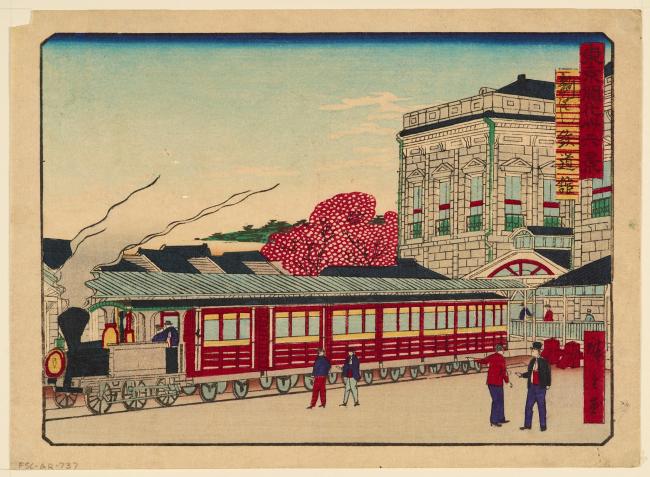Andrew Gray: Ukiyo-e prints in the Tokugawa and Meiji Periods

Thirty
Utagawa Hiroshige III
Ukiyo-e print
Senior Andrew Gray is an art history and Asian studies major and art minor from Bloomington, Ill.
Statement
In my research, I am looking at Japanese Ukiyo-e prints during the late Tokugawa Period (1603-1868), and into the early Meiji Period (1868-1912). This period was characterized by immense change in Japan, with the forced opening of Japanese ports by Commodore Matthew Perry, which cultivated a large amount of cultural exchange between Japan and the West. I am arguing that because of the popular and appealing nature of Ukiyo-e prints, and their being widely available and accessible to the everyday person in Japan at the time, we are able to get a unique perspective about the cultural exchange between Japan and the West, and the changes in Japanese society as a result.

Some examples of these changes depicted in Ukiyo-e include automobiles, steam trains and ships, cameras, and western dress. Many of these things were quickly adopted into Japanese life, as seen in prints by the students of Utagawa Hiroshige (Hiroshige II, Hiroshige III). The works of these artists, trained by one of the most famous Ukiyo-e artists of the Tokugawa period, are a perfect example of how these new ideas were presented in a familiar and approachable way.
